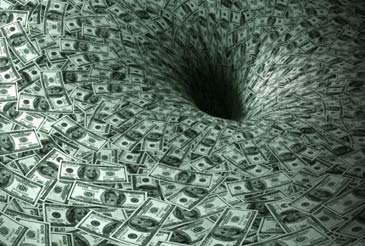Markets Gone Mad: Shaking Off Six Years of the Fed’s Zero Rates and Liquidity Injections

Imagine your doctor put you on a daily dose of oxycontin, phenobarbital and Quaaludes for six years straight. Then he suddenly cancelled your prescription.
Do you think your behavior might become a bit erratic?
This is what’s going on with the stock market. It’s trying to shake off six years of overmedication brought on by the Fed’s zero rates and liquidity injections.
Let me explain: Until recently, stocks had been on a tear that pushed valuations into the stratosphere. Volatility stayed low because Bernanke’s easy money and QE made investors more placid, serene and mellow. They ventured further out on the risk curve and took more chances because they were convinced that the Fed “had their back” and that there was nothing to worry about.
Then things began to fall apart. The Fed ended its asset purchase program and started talking about “normalization”, an opaque term the Fed uses to avoid the harsher sounding “rate hikes.” This is what began to rouse investors from their drug-induced trance. The era of cheap money was coming to an end. The punch bowl was being taken away.
Then– just as the Fed’s surging liquidity had calmed the markets for six years– the absence of liquidity and high-frequency trading sent stocks gyrating wildly for months on end. The markets became unpredictable, convulsive, topsy-turvy. And while rates remained fixed at zero throughout, the mere anticipation of higher rates was enough to ignite a sustained period of extreme volatility unlike anything traders had ever seen before. By taking its foot off the gas pedal and trying to restore traditional market dynamics, the Fed had slammed the vehicle into reverse unleashing pandemonium across global markets.
Naturally, the pundits tried to blame the mayhem on China or emerging markets or droopy commodities prices or even deflation. But it’s all baloney. The source of the problem is the Fed’s easy money policies, that’s what created the disconnect between valuations and fundamentals, that’s what sent stock prices to the moon, and that’s what inflated this ginormous stock-and-bond bubble that is just now beginning to unwind. China might have been the trigger, but it’s certainly not the cause.
Last Thursday, the unthinkable finally happened: The FOMC issued a statement that the interest rates would not be raised after all, but that ultra-accommodative policies would remain in place for the foreseeable future. On similar occasions, the markets have always rallied in gratitude for more-of-the-same easing. But not this time. This time, the Dow Jones surged 100 points before cratering 299 into the next session.
“Ah, the Fed has lost its magic touch”, the analysts opined. The promise of zero rates was no longer enough to push stocks higher. What does this mean? If the Fed does not have supernatural powers, then who will keep the markets from plunging? Who will keep the bubble intact? Who will save us from a painful correction?
Nobody knows.
What we do know is that stocks are currently rising on the back of cheap credit that is being diverted into Mergers and Acquisitions (M&A) and stock buybacks. Corporate debt continues to grow even while earnings and revenues shrink. In other words, the Fed’s perverse incentives (zero rates) have seduced corporations into piling on record debt for financial engineering and asset stripping, while investment in building up their companies for future growth (Capex) has fallen to post war lows. That’s the kind of shenanigans that’s driving the markets.
Corporations have been riding the crest for the last three years, refinancing more than $1 trillion per year from 2012 to 2015. But tighter credit conditions and mounting debt servicing is expected to curb their appetite for more borrowing dampening the prospects for higher stock prices. The same rule applies to stock buybacks. When equities prices flatten out or drift lower, and debt gets more pricey, share repurchases no longer make sense. So, you can see that –even if rates stay low– tighter credit and extra debt servicing is going to pull the rug out from under the market and put stocks into a deep freeze.
The point is, the Fed knows what’s going on but just looks the other way. They know their easy money isn’t building a strong, sustainable recovery. They know it’s being used to beef up leverage on risky bets so dodgy speculators can make a killing. They know it all, but they don’t give a rip. They just want to keep the game going a little bit longer, that’s all that matters to them. Heck, maybe Yellen has convinced herself that she can pull a rabbit out of her hat at the last minute and save us all from disaster? It’s possible, but I doubt it. I think she knows we’re goners. The economy is soft, the markets are zig-zagging wildly, and the whole bloody contraption looks like its ready to blow. She must know that the game is just about over.
Mike Whitney lives in Washington state. He is a contributor to Hopeless: Barack Obama and the Politics of Illusion (AK Press). Hopeless is also available in a Kindle edition. He can be reached at [email protected].

